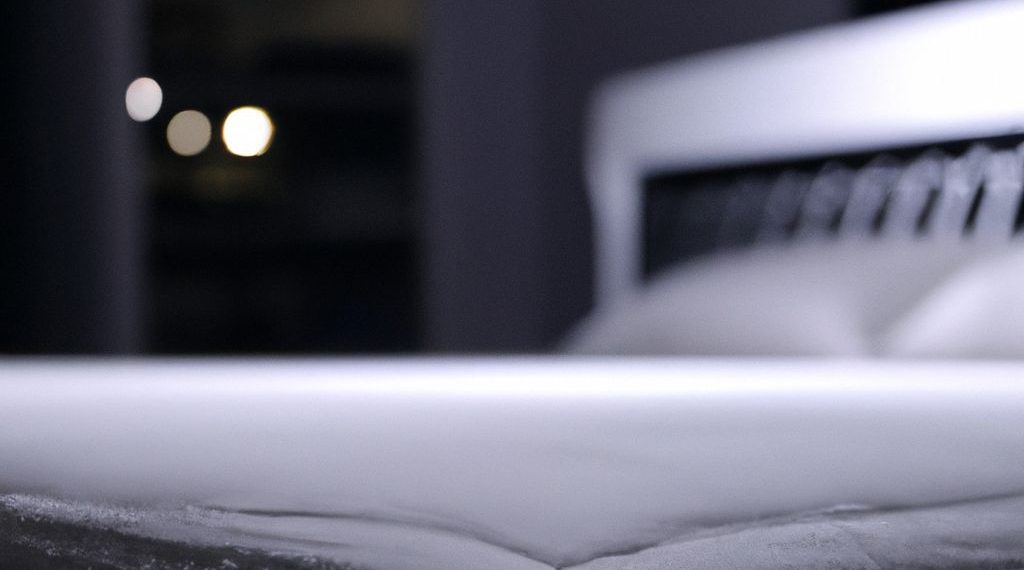Key Takeaway:
- Memory foam mattresses offer numerous benefits, including improved comfort, pressure relief, and motion isolation, which can contribute to better sleep quality.
- It is important to break in a memory foam mattress by allowing it to soften fully over time and using it for sleep. Avoid using a mattress topper until the mattress is fully broken in.
- Sleep positions can affect the comfort and support of a memory foam mattress. Side sleepers may benefit from the contouring properties of memory foam, while stomach sleepers may require firmer support. Back sleepers should consider their personal comfort preferences.
- Improving the comfort of a memory foam mattress can be achieved by adding a memory foam mattress topper to older mattresses, rotating the mattress regularly, and ensuring a solid base for proper support. Cooling memory foam mattresses or toppers with open-cell foam technology can also enhance comfort.
- Expert recommendations for memory foam mattresses include tips to speed up the softening process and make the mattress sleep cooler in summer. There are also alternatives and specialized mattresses available for those who prefer alternatives to memory foam.
- In conclusion, sleeping on a memory foam mattress can provide numerous benefits, and optimizing comfort and support through various techniques can enhance the overall sleep experience.
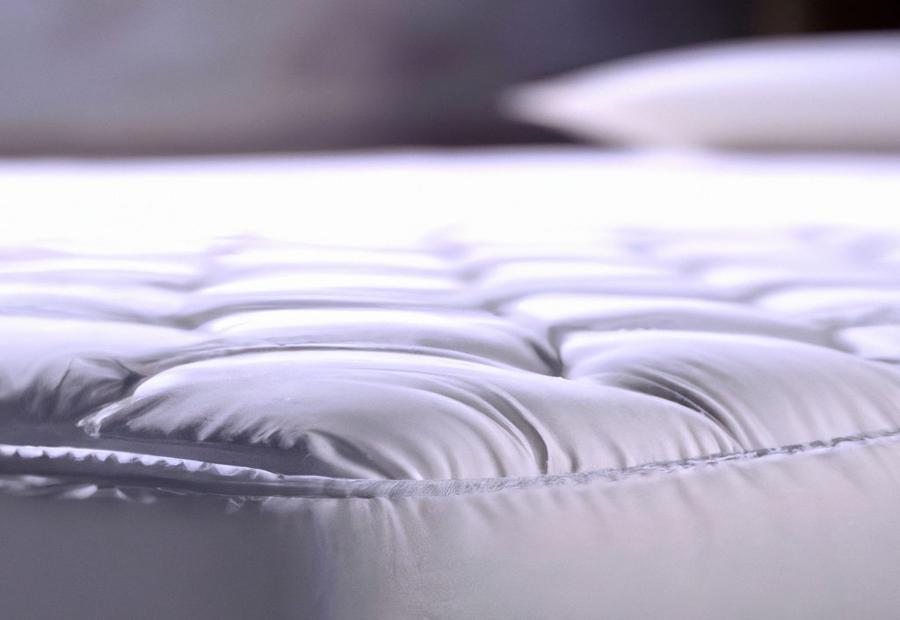
Photo Credits: Www.Mattressreviewguru.Com by Gabriel Scott
Sleeping on a memory foam mattress offers a world of benefits that can greatly enhance your sleep experience. From superior comfort to pressure point relief, this introduction will explore the advantages that memory foam mattresses provide, ensuring you get a restful and rejuvenating night’s sleep.
Benefits of memory foam mattresses
Memory foam mattresses boast many advantages for a peaceful snooze. These mattresses mould to the body, giving support and reducing pressure. Plus, weight is spread evenly so sleep isn’t disturbed by movement. Pain and discomfort can be relieved too, as pressure points are soothed and back alignment corrected. Memory foam mattresses offer amazing comfort and support, making them great for those seeking a better night’s rest.
- Comfort: Memory foam is custom fit to each body, providing perfect support and dispersing weight evenly. Pressure on sensitive areas such as shoulders and hips is lessened.
- Pressure Relief: Memory foam is responsive to body heat and pressure during sleep, taking away pressure points and distributing weight.
- Motion Isolation: This material absorbs movements, instead of transferring them across the mattress. Perfect for couples, as the other person’s movements won’t disturb your sleep.
These features make memory foam mattresses stand out from traditional spring or hybrid mattresses. To get the most out of memory foam mattresses, try a quality memory foam mattress topper. Rotate regularly to keep shape and prevent uneven wear. Pick cooling memory foam mattresses or toppers with open-cell foam tech for a cooler sleep environment. Follow these tips to make the most of memory foam mattresses and their awesome benefits!
How to break in a memory foam mattress
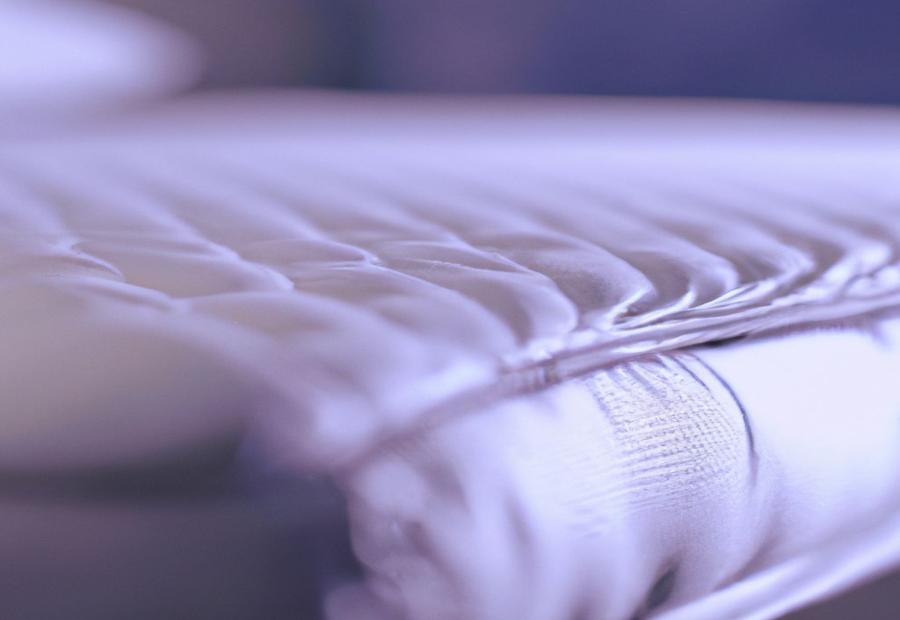
Photo Credits: Www.Mattressreviewguru.Com by Elijah Wilson
When it comes to breaking in a memory foam mattress, there are a few key factors to consider. From the time it takes for the mattress to fully soften to the benefits of sleeping on it to speed up the process, we’ll explore some valuable insights. We’ll also touch on the importance of avoiding mattress toppers until the mattress is fully broken in and the best practices for unboxing and allowing boxed memory foam mattresses to expand. Plus, we’ll discuss the trade-off between comfort and support when sleeping on memory foam before full expansion.
The time it takes for a memory foam mattress to fully soften
Memory foam mattresses need time to adjust to your body. It can depend on the quality and how often used. Experts say it takes 24-48 hours to fully expand and soften after unboxing. During this time, the mattress will become more comfortable and supportive.
To soften quicker, sleep on the mattress regularly. This helps compress and mold the foam. Extra layers, like a mattress topper, should be avoided until the mattress has broken in.
If the memory foam mattress is compressed for shipping, unbox it and lay it flat on a solid surface. Give it 24-48 hours for full expansion before sleeping.
Partially expanded memory foam may provide comfort but not the same support as when it has fully softened. It comes down to personal preference and comfort needs.
Sleeping on the mattress to speed up the softening process
- Sleep on a memory foam mattress to hasten the softening process.
- Put it on a solid base, like a platform bed or foundation.
- Get rid of any plastic wrapping/coverings for proper airflow.
- Rotate the mattress every few months to evenly distribute body weight.
- Lie down in your favorite sleep position – it will help break in the mattress faster.
If the mattress was boxed, unbox it quickly and give it 24-48 hours to expand. Don’t try to rush the softening process by sleeping on it too soon!
For extra comfort, add a memory foam mattress topper to an older mattress or incorporate cooling technology, like open-cell foam. This will help with uneven softening and heat retention. Follow these steps for the best experience on a memory foam mattress!
Avoiding the use of a mattress topper until the mattress is fully broken in
If you want your memory foam mattress to break-in properly, don’t use a mattress topper until it has softened. Here’s how:
- Unbox the mattress and follow the manufacturer’s instructions for expansion.
- Sleep directly on the mattress without any layers.
- Give it several weeks to soften and contour to your body.
- Don’t use a mattress topper, as it could interfere with the natural softening.
- Once the mattress is comfortable, you can add a topper if desired.
It’s best to wait for the mattress to soften before making any adjustments. This way, you will enjoy the full benefits of a memory foam mattress. The joy of watching the mattress expanding is like seeing your dreams come true!
Unboxing and allowing boxed memory foam mattresses to expand
- Remove the boxed mattress from its packaging carefully.
- Place it on a flat surface and slowly unroll and unfold it.
- Give it 24-48 hrs for full expansion.
- Air out any initial odor and test for full expansion.
- Massage any remaining compressed areas until they fill out.
- Allowing the mattress to expand fully before sleep ensures maximum comfort and support.
- Check the manufacturer’s instructions for best results.
The trade-off between sleeping on memory foam before full expansion and comfort/support
The trade-off between sleeping on memory foam before it expands and comfort/support is key. Balance the desire for immediate comfort with adequate support for optimal sleep.
Allow the mattress to expand before sleeping on it. This ensures proper support and comfort. It also enables even pressure distribution, enhancing the sleep experience.
Don’t use a mattress topper until the mattress is broken in. This preserves the benefits. Sleeping on the mattress speeds up softening, but wait until it’s fully broken in before adding a memory foam mattress topper.
Rotate the mattress regularly for even usage and to prolong its lifespan. Consider the best mattresses for those with scoliosis or toppers with open-cell foam technology for added comfort.
By following these guidelines, individuals can maximize comfort on a memory foam mattress while maintaining support. The trade-off between sleeping on memory foam and comfort/support can be managed.
Sleep positions and memory foam mattresses
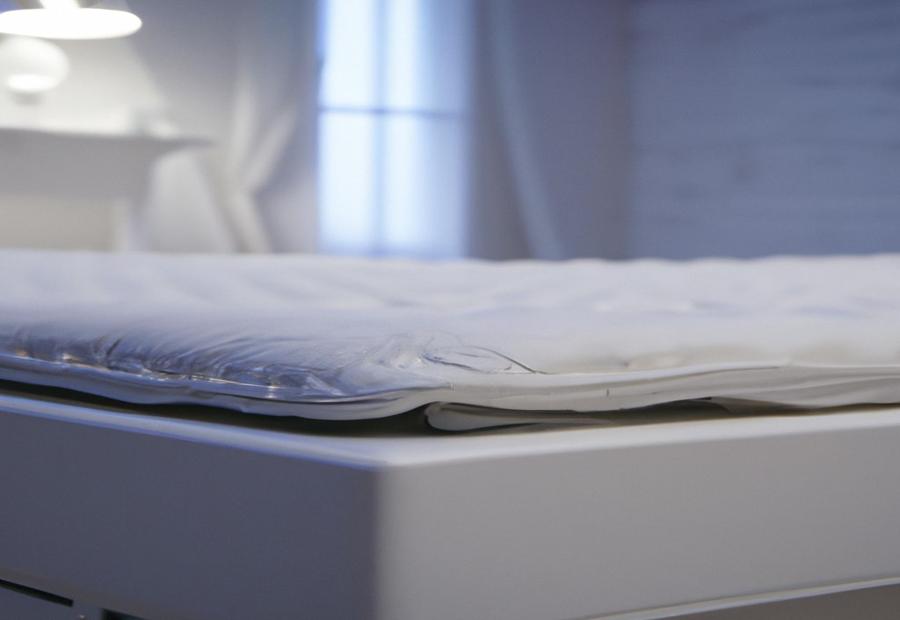
Photo Credits: Www.Mattressreviewguru.Com by Elijah Adams
Finding the right sleep position is essential for a good night’s rest. In this section, we’ll explore how memory foam mattresses cater to different sleep positions. From the benefits of memory foam for side sleepers, to the need for firmer support for stomach sleepers, and personal comfort preferences for back sleepers, we’ll uncover how memory foam can enhance your sleep experience. Let’s dive in and discover the ideal sleep position on a memory foam mattress for a night of rejuvenation.
Benefits of memory foam for side sleepers
Memory foam mattresses are a great choice for side sleepers! They offer targeted support and contouring to the body’s curves, helping to reduce pressure points. Plus, they cradle the shoulders and hips, so weight is evenly distributed.
Also, memory foam has a slow response rate for customized comfort. And, it has excellent motion isolation properties, meaning movement won’t disturb the other person.
So, if you’re a side sleeper, make sure you pick the right level of firmness and thickness in your memory foam mattress for a good night’s rest!
The need for firmer support for stomach sleepers
Stomach sleepers have specific needs when it comes to a mattress. A firmer one is preferable, as it provides better support and helps maintain proper spinal alignment. This prevents sinking that can lead to neck and back pain. Memory foam is an ideal choice for stomach sleepers as it can provide additional lumbar support. Hybrid mattresses, which combine memory foam layers with firmer innerspring coils, are another great option.
However, if stomach sleepers are used to sleeping on softer surfaces, they may need to transition gradually to a firmer mattress. Unsupportive surfaces can cause poor posture during sleep and lead to discomfort when waking up. To ensure healthy spinal alignment during the night, it’s important for stomach sleepers to choose the right level of firmness.
Personal comfort preferences for back sleepers
Back sleepers have special cravings for their own ease on a memory foam mattress. The article reveals details about the components that give back sleepers comfort and how memory foam mattresses can meet their needs.
- Back sleepers often favor a medium-firm to firm mattress for optimal spine alignment and support.
- Memory foam’s moldable features can give pressure relief to back sleepers by adapting to their body’s shape.
- Memory foam mattresses can evenly disperse weight, lowering the risk of pressure points and unease for back sleepers.
- Those who suffer from lower back pain may benefit from a memory foam mattress as it can offer specific support and reduce pressure on the lumbar area.
- Memory foam’s temperature sensitivity lets it respond to body heat, offering a personalized sleeping experience that adjusts to each person’s requirements.
- Back sleepers may find that memory foam mattresses with cooling technology or open-cell foams offer increased breathability, aiding in regulating body temperature during the night.
To further increase the comfort of back sleepers on a memory foam mattress, they are encouraged to try out different pillow heights and shapes. This may help reach ideal neck and head alignment, endorsing better spinal alignment overall. Plus, adhering to good sleep hygiene practices such as a consistent bedtime routine and making a comfortable sleeping environment can contribute to a peaceful sleep for back sleepers. Transform your memory foam mattress with these comfort-boosting hints and tips.
Improving the comfort of a memory foam mattress
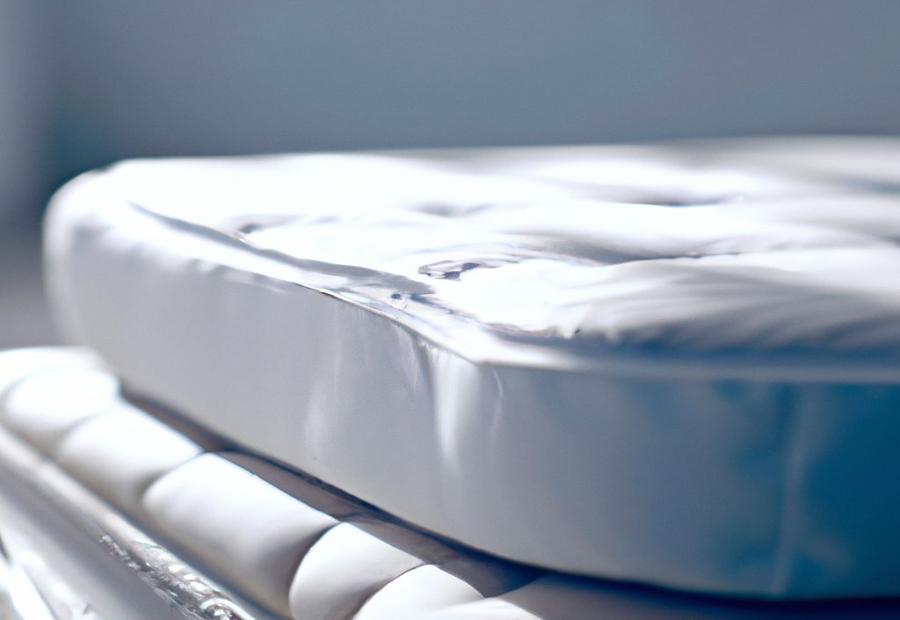
Photo Credits: Www.Mattressreviewguru.Com by Thomas Lopez
Improving the comfort of a memory foam mattress is key to a restful sleep. Discover techniques for enhancing your mattress experience, such as adding a memory foam mattress topper to older mattresses, rotating the mattress for even wear, and exploring cooling options with open-cell foam technology. Wake up rejuvenated and ready to seize the day with these simple adjustments for optimal comfort on your memory foam mattress.
Adding a memory foam mattress topper to older mattresses
Memory foam mattress toppers offer cushioning + contouring, adapting to body shape + relieving pressure on joints. They add softness to older mattresses that have lost original comfort due to wear + tear. Toppers provide customized support + promote proper spinal alignment. They may also reduce motion transfer, ideal for couples disturbed by each other’s movements. Memory foam toppers may be used as a temp. solution while saving up for a new mattress.
It’s essential to note that a memory foam topper may not fully address underlying issues with an old mattress. If sagging or structural damage is present, replacing the mattress may be necessary. For max. effectiveness, pair the topper with a solid base for support + rotate the mattress regularly to distribute weight evenly.
Rotating the mattress and ensuring a solid base
Rotate your memory foam mattress every 3-6 months. This means flipping it 180 degrees, so the head end becomes the foot end. This helps evenly spread body weight and reduces any permanent impressions.
Ensure a solid base is underneath to provide support. Use a platform bed or bed frame with closely spaced slats. Avoid an unsupportive box spring. This helps your memory foam mattress stay supportive and comfortable.
Rotating the mattress lets it breathe and prevents moisture build-up. Spinal alignment is also maintained, which relieves pressure points. Rotating mattresses has been recommended historically to prevent uneven wear. Memory foam needs proper support to deliver its benefits.
Cooling memory foam mattresses or toppers with open-cell foam technology
Open-cell foam technology has revolutionized the memory foam mattress and topper industry. Interconnected air pockets allow for better ventilation and temperature regulation. It increases breathability and promotes airflow, drawing heat away from the body. This active cooling prevents discomfort from overheating.
Key benefits include:
- Breathability and increased airflow for a cooler sleeping environment
- Heat transfer, allowing excess warmth to escape
- Reduced heat buildup, offering a consistently comfortable temperature
Cooling memory foam mattresses or toppers are the perfect choice for those seeking a refreshing sleep. They provide relief from nighttime overheating, optimal support, and pressure relief. In addition, they conform to the body’s curves, ensuring proper spinal alignment. Combining comfort, support, breathability, and temperature regulation, these products deliver an exceptional sleep experience.
Expert recommendations and alternatives for memory foam mattresses
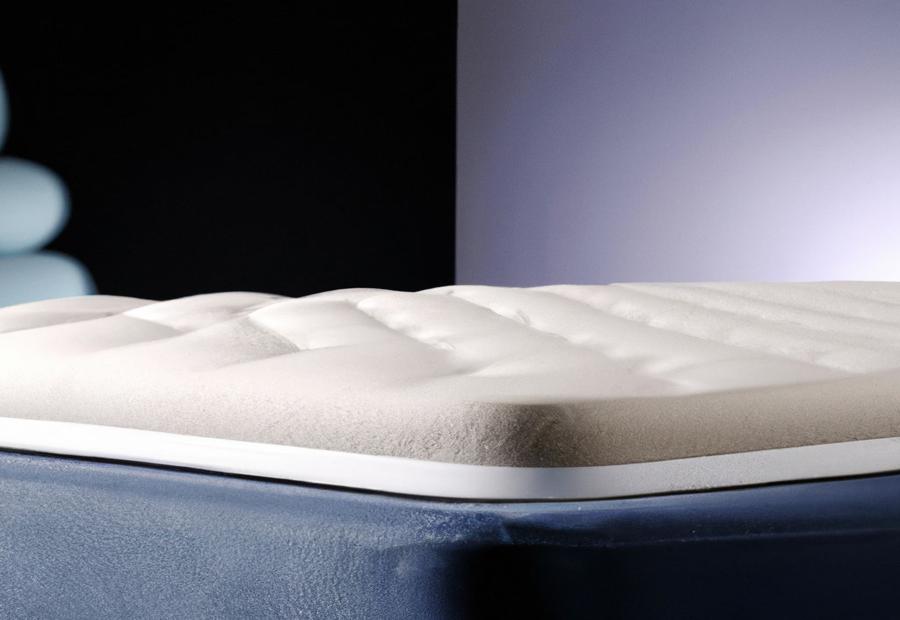
Photo Credits: Www.Mattressreviewguru.Com by Keith Taylor
Looking to enhance your sleep on a memory foam mattress? Discover expert recommendations and alternatives in this section. From tips to expedite the softening process to CNET’s advice on cooling your mattress in the summer, we’ve got you covered. Additionally, we’ll explore the Sleep Foundation’s tips for a cooler sleep experience on a memory foam mattress. Finally, we’ll discuss specialized mattresses and alternatives to memory foam that might suit your needs. Sleep soundly with the knowledge you’ll gain here.
Tips from Land of Sleep to speed up the softening process
-
Rotate your mattress regularly. Do this every few months to even out wear and avoid sagging. This helps break in the mattress more evenly and quickly.
-
Apply gentle pressure. Use your hands or knees to apply light pressure on different parts of the mattress. It will loosen up the foam cells and make it softer.
-
Increase airflow. Good air circulation is important for memory foam mattresses to soften. Use a breathable mattress protector and get rid of any extra bedding that may be blocking ventilation.
-
By following Land of Sleep’s tips, you can speed up the softening process of your memory foam mattress. Everyone is different when it comes to comfort and sleep positions. Experiment and adjust according to your own preference.
-
It’s also crucial to choose a good quality mattress from a reputable brand. Inexpensive memory foam mattresses may not be as good and durable as those from well-known brands.
-
Land of Sleep’s tips are trustworthy. They have years of knowledge and experience in the sleep industry.
CNET’s tips for making a memory foam mattress sleep cooler in summer
Want to make your memory foam mattress cooler in summer? CNET, a tech & consumer electronics website, has some great tips!
- Choose a mattress with cooling properties; like open-cell foam tech or gel-infused memory foam.
- Bedding matters too! Opt for sheets made of natural fibers like cotton or bamboo, as they allow for air circulation & moisture-wicking.
- Accessorize for extra cooling. Try a mattress protector or cooling pads & pillows.
You can create a cooler sleeping experience without sacrificing the support & comfort of memory foam.
Sleep Foundation’s tips for making a memory foam mattress sleep cooler
The Sleep Foundation has some great tips for making a memory foam mattress sleep cooler. Selecting the right mattress is key: go for one that has cooling properties, such as those infused with gel or charcoal. These materials help cool you down. Also, opt for bedding that is breathable, like cotton or bamboo. This allows for better ventilation and heat dissipation. To find out which mattress is better, Casper or Purple, you can visit this website. A mattress protector with moisture-wicking properties can also help. It prevents sweat from getting trapped in the memory foam mattress. Cooling pads or toppers are also great. They absorb heat and regulate body temperature. Being a Stomach Sleeper: What Mattress Features Works Best? You can also adjust the thermostat or turn on a fan to create a cooler atmosphere. Finally, ensure there is ample space around the mattress to allow for good ventilation. This will keep the mattress cool and comfortable. Follow the Sleep Foundation’s tips to enjoy a cooler and more restful sleep on your memory foam mattress.
Recommendations for specialized mattresses and alternatives to memory foam
Discover specialized mattresses and alternatives to memory foam for a unique sleeping experience. Latex mattresses offer natural materials for support, pressure relief, breathability, and hypoallergenic properties. Airbeds can be adjusted to different firmness levels, while hybrids combine memory foam with other materials for a balanced feel. Organic mattresses provide an eco-friendly option. Weigh your personal needs against the features of each type to find the perfect match. Don’t miss out on the chance to experience a tailored sleep environment – start exploring today!
Conclusion and final considerations for sleeping on a memory foam mattress
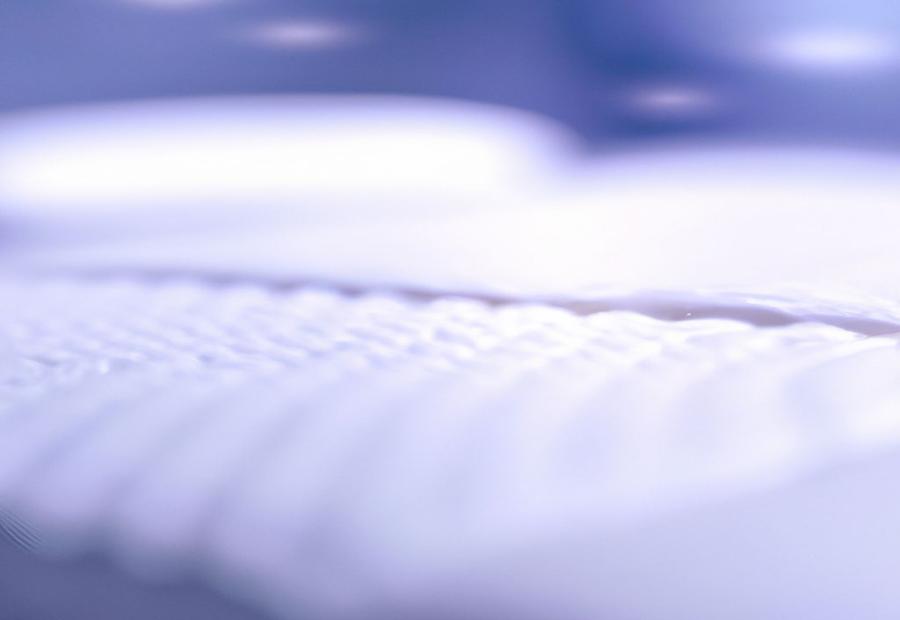
Photo Credits: Www.Mattressreviewguru.Com by Mark Flores
Memory foam mattresses offer superb sleeping comfort! They conform to body shape, provide pressure relief and isolate motion. Plus, they’re resistant to dust mites + mold, ensuring a healthier sleep environment. Durability-wise, they offer long-lasting comfort and support.
When it comes to memory foam mattresses, there are a few considerations. Firstly, allow for full expansion after unpacking. Rotate every 3-6 months. Use a mattress protector and maintain a consistent temp in the bedroom.
Some Facts About How to Sleep on a Memory Foam Mattress:
- ✅ Memory foam mattresses take time to fully soften as they react to weight and body heat. (Source: Team Research)
- ✅ Sleeping on the mattress helps speed up the softening process of memory foam mattresses. (Source: Team Research)
- ✅ It is recommended to avoid adding a mattress topper until the memory foam mattress is fully broken in. (Source: Team Research)
- ✅ Some memory foam mattresses require at least 24 hours of unboxing and expansion time. (Source: Team Research)
- ✅ Memory foam mattresses are good at providing pressure point relief, cushioning around joints, and reducing movement disturbance. (Source: Team Research)
FAQs about How To Sleep On A Memory Foam Mattress
How do I make my memory foam mattress feel light and airy?
To make your memory foam mattress feel light and airy, consider using a cooling mattress topper with a perforated surface, such as latex foam toppers. These toppers can improve the overall temperature regulation of the bed and allow for better airflow.
What are some creative ideas to break in my memory foam mattress?
To break in your memory foam mattress, you can try walking or crawling on it to help condition it and make it more comfortable. Additionally, you can warm up the memory foam by raising the temperature in the bedroom or using heat devices like electric blankets or hot water-filled heat packs.
Where can I find memory foam mattresses at direct-to-consumer prices?
You can find memory foam mattresses at direct-to-consumer prices from various mattress companies. One such company that offers a range of memory foam mattresses at direct-to-consumer prices is available in the source link provided.
What are some cooling options for memory foam mattresses?
For cooling a memory foam mattress, you can use cooling pillows and sheets made from breathable materials like cotton or linen. Additionally, consider utilizing bedding accessories like mattress toppers or mattress pads made of gel-infused memory foam or latex to improve temperature regulation.
How can I minimize movement disturbance on a memory foam mattress?
To minimize movement disturbance on a memory foam mattress, you can choose a mattress with motion isolation properties. Memory foam mattresses are known for reducing movement disturbance, providing a more peaceful sleep experience.
How frequently should I perform regular maintenance on my memory foam mattress?
Regular maintenance for a memory foam mattress typically involves rotating the mattress and ensuring a solid base. It is recommended to perform these maintenance tasks every few months to help revive the mattress and maintain its longevity.

